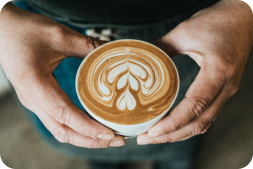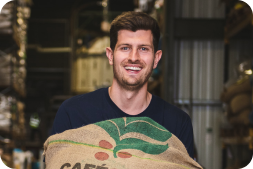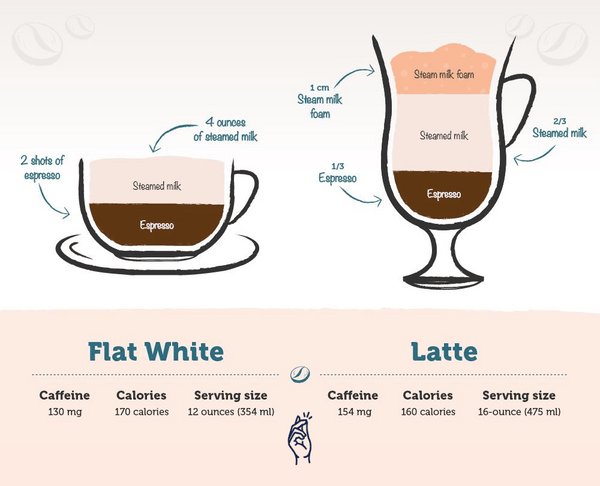It’s the simple things in life that we savour. Summer days. Buttered toast. A crackling fire. And… a perfectly brewed cup of coffee. If you’ve tried brewing your own, you’ll know that the rich and delicious flavour of your local barista is difficult to capture. No matter what you try, you can’t seem to get it right. We’re like Goldilocks in the three bears cottage; only we’re making a mess of the breakfast. Too hot. Too bitter. Too milky. Too strong.
But ask how to make coffee perfectly, and you’ll be wading into a bitter debate. The battle lines have been drawn: AeroPress and pour-overs, French presses and auto-drip. For beginners, it’s all a little bewildering.
Coffee doesn’t have to be complex, however. The perfect cup is achievable. Follow these simple steps, and you’ll know how to make perfect coffee every time.
How Do You Make Coffee at Home?
Suppose you’re not lucky enough to have the finest coffee machine on the market. In that case, you’re likely using an AeroPress, Chemex, French press, or a pour-over. With each technique, you can master the perfect cup of coffee; you just need to understand the method to the madness.
Step 1: Pick Your Beans
There’s a saying here at Presto: coffee is only as good as the bean. There are two broad choices: Arabica and Robusta. Robusta is cheaper to grow with a stronger, bitterer flavour – it also contains twice the caffeine. Meanwhile, Arabica beans have more floral, chocolatey notes, noted for their rich and well-rounded flavour.
If you’re starting out, capture the notes of almond and dark cocoa with our Espresso Roast straight from Mogiana, Brazil. However, our exotic Rocket Roast – grown in Vietnam – has a dark and sultry taste profile if you’re feeling adventurous.
Avoid grinding the beans until you’re ready to brew. Alternately, you can buy ready ground coffee; just keep it stored in a cool, air-tight container.
Step 2: Measure the Water Temperature
Here’s the secret step—the key to a masterful cup of coffee. For maximum flavour extraction, aim to heat the water to 95oC. Any hotter and you risk burning the beans; any cooler, and you won’t get a full-bodied flavour.
It’s also worth considering the water type. We rarely think about water’s flavour. Yet, the mineral profile of tap water can significantly alter a brew. When trialling different methods of how to make coffee, try filtered or bottled water. It’ll revolutionise your cup.
Step 3: Weigh out your ingredients
Here, you’ll accurately measure the precise ratio of coffee to water. Skip the teaspoon; use a scale (although a scoop also works). How much coffee you use is a matter of taste. If you prefer a stronger cup, lean on the heavy side. Otherwise, go mild and work up. It’ll take a few cups – and lots of trial and error – to perfect the right volume. But, once you’ve cracked the formula, remember the amount used to achieve the perfect flavour for future cups.
Here’s a rough guide to get you started:
AeroPress – 17 grams of coffee
Chemex – 32 grams of ground coffee
Pour-Over – 32 grams of ground coffee
French Press – 35 grams of ground coffee
Step 4: Brew the coffee
Depending on the device or method you’re using, brewing will differ significantly. There’s a top tip to remember, however. Always time your brew. Think of it as the Goldilocks Rule of Brewing. Too long, and you’ll over-extract the flavours; too early, and those rich and wholesome notes stay locked in the coffee grounds. Just right – and you’ve brewed the perfect cup. Ahh…
The perfect time?
To begin, pour enough water to wet all the ground. Let the coffee stand for 45 seconds. The flavour will ‘bloom’ in a process called degassing. (You’ll notice a mild bubbling.) Then, add the rest of the water slowly to the coffee over two minutes.
Voila! You’re done.
What’s the best coffee for beginners?
If you’re a brewing beginner – still in the foothills of mastering the perfect cup – start with the AeroPress. Quick and easy, you’re almost guaranteed a cracking cup of coffee. However, as you advance, you’ll want to move onto more complex techniques. AeroPress is simple, but the flavour profile of the coffee isn’t as complex as alternative methods such as the French Press – full-bodied and delicious – or Chemex – complex and well-balanced.
How do you make coffee for beginners?
Here, we’ll cover two commonly used techniques: AeroPress and French Press. Master these, and you can imPRESS your friends with your brewing skills.
AeroPress
Short and sweet. Ideal for when you’re brewing up a single cup. For beginners, it’s an excellent starting point.
- Grind your coffee beans into a fine powder.
- Dampen the rubber piston and insert it into the cylinder.
- Weigh out 17 grams of coffee into the cylinder.
- Carefully pour 250 grams of hot filtered water (95oC).
- Rest for just over a 1-minute.
- Position filter paper into the holder and wet.
- Turn the brewer over onto a cup. Then, gradually press the cylinder down to pour coffee into the cup.
French Press
The Classique of brewing. The quintessential coffee maker for a family breakfast. Here, without filter paper, the coffee retains its natural oils. But you may get a small amount of ground in your cup.
- Grind beans coarsely.
- Weigh out 35 grams of coffee and tip into the carafe.
- Pour 250 grams of hot filter water (95oC).
- Stir for five seconds with a metal spoon.
- Pour a further 250 grams of water (500 grams total).
- Let the coffee rest for 4 minutes, stirring halfway through.
- Press the plunger to the base of the carafe.
How do you make coffee with milk?
According to the experts, add the milk into your cup first. Then, pour the coffee into the mug. No stirring required. It’s that simple. If you’re feeling particularly luxurious: use cream. It’ll give the coffee a thick flavour that enhances the rich, sultry notes. Mastering your coffee brew? Get to know the caffeine content to tailor your perfect cup. Check out our 'How Much Caffeine is in Coffee' for details.
However, many coffee experts argue that milk or cream masks coffee’s natural flavour. There’s truth to that. But if you’re concocting a latte or cappuccino, there’s only one rule to follow: go full-fat. Using slim and reduced-fat milk isn’t creating a latte; you’re just watering down your coffee. If you’re after flavour, then you’ll need to go all in.
There you go, your complete guide on how to make coffee. Now, give it a try!
Mastering the perfect brew? Take your skills a step further and learn how to make whipped coffee, a popular and Instagram-worthy coffee treat.




